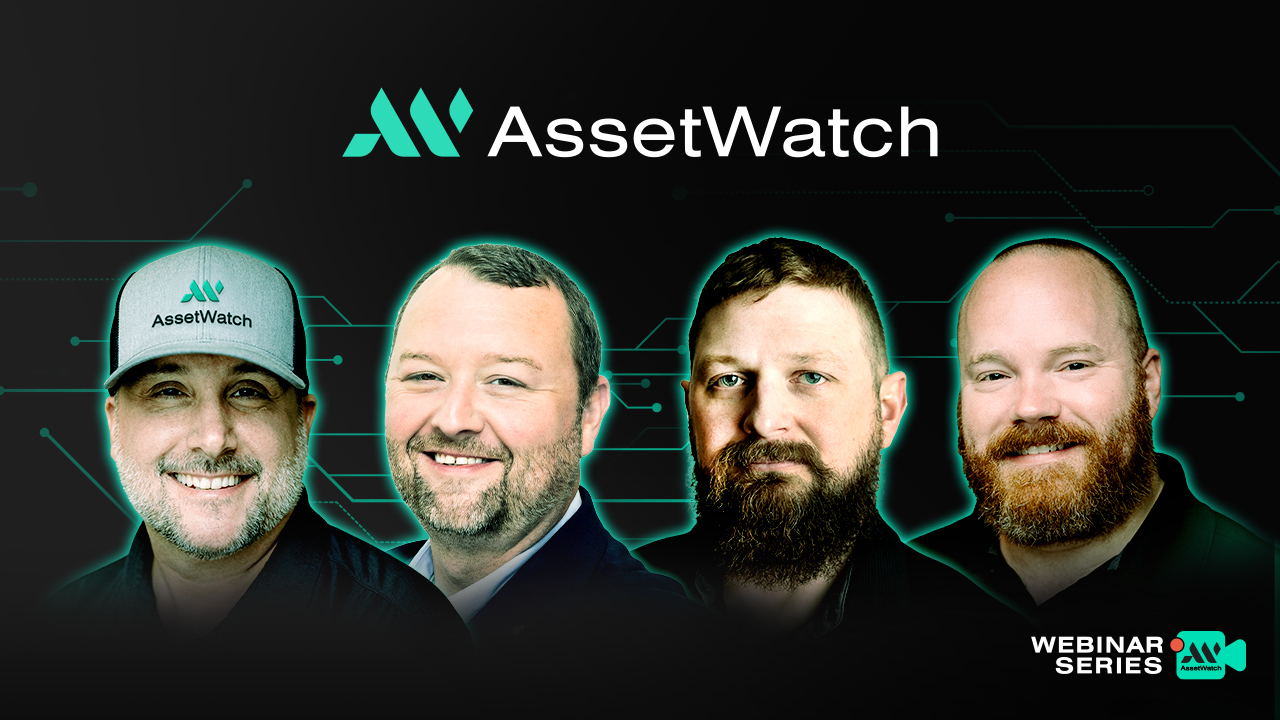A common misperception in manufacturing is that predictive maintenance (PdM) takes months, if not years, to implement.
That might have been true in the past (or it may still be true, in some cases). But the most advanced predictive maintenance systems have become faster, smarter, and more modular than you might realize. With plug-and-play sensors, AI-powered analytics, and dedicated human support, a rapid rollout is now becoming the standard, with teams equipped to prevent breakdowns in just a day or two.
In this post, we'll explain why a predictive maintenance program can take forever to implement. You’ll learn what actually slows down adoption, how modular deployments work, and what a fast, successful PdM strategy looks like.
Why predictive maintenance rollouts have a reputation for being slow
Sudden equipment failure is chaotic and costly. It takes a heavy toll on people, machines, and profits. Even so, there’s a reason many manufacturers hesitate to implement a predictive maintenance program. They’ve either lived through a painful rollout, or they've heard horror stories from their peers.
A traditional implementation can feel like a tangled web of decisions spanning hardware procurement, IT integration, CMMS alignment, initial rollout, training plans, and internal buy-in.
Some companies take a “big bang” approach, attempting to transform their entire maintenance process all at once, across all equipment and sites. This approach tends to collapse under the weight of complexity.
💡 In reality, shifting to predictive maintenance doesn't need to be a complicated, drawn-out process. What often slows it down is not the tech setup, but the strategy. Companies that lack a clear path for implementation, or overload their team with too much change at once, end up paralyzed.
Fortunately, with the right approach and the right partner, an end-to-end predictive maintenance program can be live in just 1-2 days—delivering all the benefits and value of predictive maintenance with no disruption and zero friction. Read this step-by-step guide to laying the groundwork for a smooth, successful PdM pilot and maximum ROI.
Common predictive maintenance challenges that slow adoption
Even when predictive maintenance tools are fast to deploy, teams can still struggle to start driving value due to all manner of roadblocks—cultural, operational, and procedural.
A smarter strategy: ease in simply with a PdM pilot
From day one, the most effective predictive maintenance strategies are simple by design.
Instead of launching a massive facility-wide program, you can begin with a focused pilot—one line, one department, or one asset group. This approach will allow your maintenance team to learn fast and see the value quickly, making condition-based maintenance and data-driven decision making the new norms.
Advanced predictive maintenance technologies help make a fast, easy rollout possible
Let's start with the hardware. Wireless triaxial vibration sensors allow for a quick, flexible, non-invasive installation by your solution provider. Because these IoT sensors are wireless, installation doesn’t require cabling, conduit, or network integration. As they capture vibration data across three axes—with high resolution at slower speeds—these sensors connect via cellular communication hubs to stream data to the cloud, directly into a predictive analytics platform.
A dedicated CAT III+ expert helps pave the way for early, easy saves
With a full-service predictive maintenance solution in place, you'll have a complete picture of machine health. You'll also have a seasoned CAT III+ vibration analyst partnered with your team, helping them make sense of the data, perform root cause analysis, prioritize maintenance tasks, and take timely corrective action.
A PdM setup that combines advanced technologies with expert support will enable your team to start small, gather real-time asset health data, prevent failures, acclimate to the predictive maintenance process, and expand confidently from there.
What a rapid predictive maintenance implementation looks like
Start small, move fast: this is key to securing team buy-in and getting the most value out of your predictive maintenance investment. Here's what a solid fast-track implementation entails.
Step 1: Select critical assets for your pilot
Focus on assets that are expensive to repair, difficult to replace, or responsible for major production lines. Use maintenance records and your team’s insight to identify the best candidates.
Step 2: Have IoT sensors installed
High-resolution triaxial vibration and temperature sensors can be installed by your provider at no extra charge in a matter of hours, even on hard-to-access machines. Real-time data collection begins immediately—no complicated setup or integrations required.
Step 3: Begin data analysis with AI-powered software
The moment sensors are live, AI-powered predictive maintenance software begins processing data, identifying patterns and trends, and flagging anomalies. Within days, the system starts surfacing insights that allow maintenance teams to take targeted, proactive action. Over time, thanks to machine learning, the system will identify anomalies with increasing precision.
Step 4: Get proactive support from your CME
The condition monitoring engineer (CME) dedicated to your facility will review and validate alerts to filter out false positives so your team isn't overwhelmed with noise. The CME will also reach out with prescriptive recommendations that are grounded in both data and real-world context.
Step 5: Optimize and expand
Once your pilot proves its value through reduced downtime and lower maintenance costs, you can scale the program to additional assets, lines, or sites. You already have a blueprint; now you’re just replicating what works.
A successful predictive maintenance program that fits your timeline
One of the most common questions from plant managers and maintenance leads is, “How long will it take to see results?”
With the right predictive maintenance strategies and robust support, the answer is: within a week.
That’s not an exaggeration. A pilot can be operational in under two days with no IT lift. By the end of the first week, AI will be analyzing sensor data. Within a month, thanks to condition-based alerts and maintenance recommendations, many teams have already identified their first early-stage fault and prevented failures. From there, the momentum grows.
Pilot programs prove value fast. Global metals manufacturer Worthington Steel achieved an asset save within weeks of installation when a furnace roll bearing was replaced at the suggestion of the facility's dedicated CME. This quick action prevented 48 hours of unplanned downtime and saved $500,000 in potential lost gross margin. Read their success story here.
Why dedicated human support is essential for maximum speed to value
Predictive maintenance relies heavily on AI and machine learning to monitor assets continuously, detect anomalies, and prioritize alerts. But how fast your predictive maintenance program delivers value depends on how quickly and effectively your team can respond to issues.
To move fast, your team needs to understand which issues are legitimate failure risks and how to take action. They can't rely on hotlines or wait days for answers. They need dedicated human-in-the-loop analysis and guidance on a daily basis.
Only a dedicated CME who knows your plant and understands your operating environment can turn data into actionable insight. As the CME monitors activity in the platform, they triage alerts, explain fault modes, recommend next steps, and help guide maintenance work before it becomes reactive. Having the right balance of AI plus human expertise means your team spends less time chasing false alarms and more time preventing real failures.
Implement a predictive maintenance solution without the headaches
The best predictive maintenance tools are designed with adoption in mind. They make onboarding easy and reduce maintenance burdens day to day through a scalable, subscription-based model where sensors, software, installation, and CME support are bundled together and CMMS and other existing workflow integrations are seamless.
✅ A low-cost subscription with no CapEx
✅ No IT involvement required
✅ Dedicated support included
✅ No long training curve
✅ No dashboards full of noise
✅ No alert fatigue
The value of a best-in-class predictive maintenance solution lies not only in upfront cost savings and an end to reactive maintenance, but also in optimized maintenance schedules and calmer, easier workdays. With the right partner guiding them, your team can work smarter, not harder, starting on day one.
Ready to enjoy the benefits of predictive maintenance? Start small, scale smart
Predictive maintenance can deliver value in no time when you start with a smart pilot, plug-and-play technology, and expert support. The myth that predictive maintenance requires a months-long commitment is just that: a myth.
Instead of waiting for the perfect moment to overhaul your maintenance process, start small. Instrument a handful of critical assets. Let AI surface the early faults. Use your CME to guide the fixes. Then repeat.
If you want to plug in, power up, and start winning, you can do it fast—without the big upfront costs. Let's talk about what success looks like for your operation, and what you can expect. Schedule a free consultation, and discover how easy it is to get started.

















